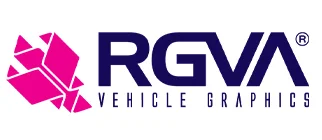When businesses invest in vehicle graphics, one of the key considerations is the longevity of the branded artwork. Typically, vehicles are regularly exposed to harsh weather and other environmental factors that cannot be avoided – issues that are just a part of their job. So, what can operators do to protect and prolong the life of the vehicle graphics?
Choosing the right cleaner
When cleaning the vehicle, it is important that you choose a cleaner that has been designed for use on high-quality painted surfaces. Ensure that it is a wet solution, which is non-abrasive and does not contain solvents. Ideally, the cleaning solution should not be either strongly acidic or strongly alkaline (a pH value of between 3-11) to protect the artwork and ensure the longevity of the vehicle graphics.
 Hand Washing
Hand Washing
The ideal method of cleaning a vehicle that has vehicle graphics fitted is by hand. It is gentler, less abrasive and more controlled. To wash by hand, the vehicles graphics should first be flushed with clean water to remove any excess surface debris and loose dirt particles. Next, a mild liquid detergent and water solution should be used with a soft brush, rag or sponge to clean the vehicle graphics. Avoid abrading the graphics through excessive scrubbing and finally rinse away the cleaning solution and dirt particles by keeping a steady stream of water flowing over the graphics until completely clean.
Power Washing
It is a myth that pressure washers cannot be used to clean a vehicle’s graphics – they can be used, as long as care is taken to prevent damage of the graphics, which can lead to the edges to lift and degrade.
Firstly, ensure a spray nozzle is used on the pressure washer with a 40° wide spray pattern. Make sure that the nozzle includes a protector or tip guard to prevent damage to the vehicle. Hold the nozzle at least 12 inches away from the graphic and perpendicular (90° +/-) to the graphic. Do not direct the water stream at a sharp angle to the edge of the graphic, as this could cause damage.
Secondly, a pressure of no more than 2,000 psi should be used on the vehicle graphics. Any greater pressure could cause lifting or peeling.
And finally, if the power washing system is heated, limit the water temperature to 180°F (82°C) or less.
 Hard to Remove Contaminants
Hard to Remove Contaminants
Spot cleaning of difficult contaminants such as bird droppings, insects and tree sap should be undertaken by soaking the affected area for several minutes in hot soapy water. Do not use abrasive tools or roughly scrub the area, as this can cause damage to the vehicle graphic. Once the contaminant has been removed, wash and rinse off all residue immediately.
Under Cover
Just like paint, vehicle graphics are gradually degraded by prolonged exposure to the sun and atmospheric pollutants. This can particularly affect the horizontal surfaces of a vehicle, such as the bonnet, boot lid and roof. Whenever possible, store the vehicle in a garage or covered structure, and, if possible, park in a shaded area during the day.
Fuel Spillage
If fuel is accidentally spilt all drips onto the vehicle graphic, wipe off immediately to avoid any degradation of the vinyl. Wash, rinse and dry as soon as possible.
Wash regularly
It is important to wash the vehicle and the graphics whenever they appear dirty or contaminated. By allowing any dirt particles or contaminants to remain on the vehicle graphics, it may cause difficulty when eventually cleaning them.
To find out more about the complete vehicle branding services offered by RGVA, or to discuss our vehicle graphic care guidelines in more detail, please get in touch.

